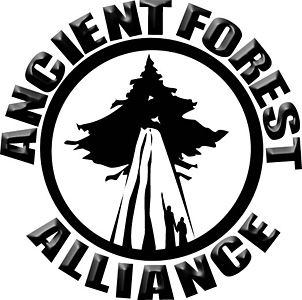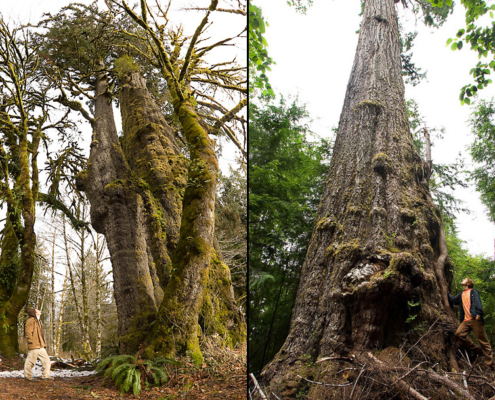The battle to save Avatar Grove
The Ancient Forest Alliance wants the Ministry to make Avatar Grove and the surrounding 90 hectares off-limits to logging. The Avatar Grove presents the finest opportunity for the public to easily gain access to world class old-growth forest, in a wilderness setting on flat gentle terrain, says Watt.

Ancient Forest Alliance (AFA) Launches the “100,000 Strong for Ancient Forests and BC Forestry Jobs” Campaign
The Ancient Forest Alliance (AFA) launched a campaign today to get 100,000 British Columbians to sign a petition (see staging.ancientforestalliance.org/ways-to-take-action-for-forests/petition/) calling on the BC government to protect the province’s endangered old-growth forests and forestry jobs. The “100,000 Strong for Ancient Forests and BC Forestry Jobs” public education and mobilization campaign will be the largest grassroots mobilization effort undertaken by BC’s ancient forest movement since the Clayoquot Sound campaign of the early 1990’s.
Week of Action for Ancient Forests – MLA Office Pickets This Week!
As part of a Week of Action for Ancient Forests, and the launch of the ‘100,000 Strong for Ancient Forests and BC Jobs’ campaign, Ancient Forest Committees (AFCs) around Greater Vancouver, paired with the Ancient Forest Alliance (AFA), are picketing at three Liberal MLA offices, starting at Gordon Campbell’s office tomorrow (Monday, October 4th), calling for an end to old-growth logging in southern BC and a move toward sustainable forestry and forestry jobs.

Old-Growth Forest Slideshow Comes to Saltspring Island on Wednesday, October 6th
Co-founders of the newly formed Ancient Forest Alliance Ken Wu and TJ Watt will host an informative and inspiring slideshow featuring spectacular photographs of Canada's largest trees, including the Red Creek Fir, San Juan Spruce, Cheewhat Cedar, and the newly-discovered, threatened Avatar Grove. The presentation will include discussion of the stunning ecology and complex politics surrounding BC's old-growth forests and forestry jobs. It will be held at Central Hall on Fulford-Ganges Road from 7:00-8:30 pm on Wednesday, October 6th, 2010.
Avatar Grove Featured in Westworld Magazine
Westworld, the most highly circulated magazine in Western Canada, just published an article and photo (taken by the AFA’s TJ Watt) on the Avatar Grove and Ancient Forest Alliance in their most recent issue. With a press run of 540,000 copies, it will help to raise major public awareness about this spectacular but endangered forest near Port Renfrew.
